The Kremlin as a bloodthirsty corporation? The comparison is not as absurd as it may seem. Surrounded by Stalin, it was extremely difficult to stay on a stool. And the risk was really high, because it was not only about the job, but also ... about the head. Here are the top eight examples.
Nikolai Yezhov
The "bloody dwarf", responsible for the deaths of about a million people, was an exemplary corpse. Thanks to diligence, commitment, willingness to learn and biting his colleagues, he went from a simple worker to the master of life and death of Soviet people. From an ordinary activist he turned into a soldier of a special-purpose battalion, an officer of party committees, a supporter of a peasant uprising, deputy commissioner (deputy minister), chief cadre of the Central Committee of the party.
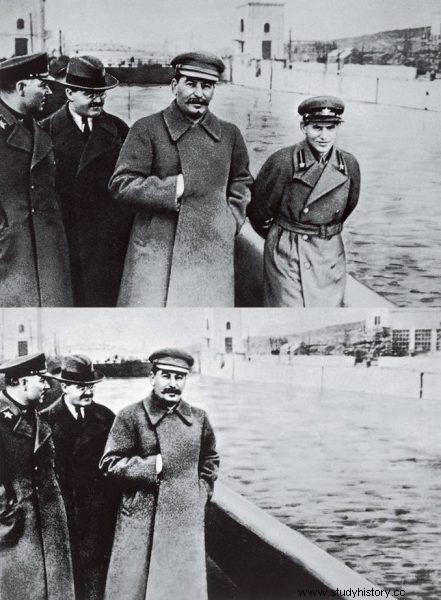
There was a man, there is no man. After the execution, Yezhov even disappeared from official photos (source:public domain).
In 1935 he was given a special assignment by the commander:to use the death of Sergei Kirov as an excuse to crack down on the old Bolsheviks. He did well and became the head of the NKVD. He liked this job the most. He personally tortured prisoners. The "great purge", which killed nearly 700,000 people, was designed by him.
He began with a deal with his predecessor, Gienrich Jagoda. He was also the author of the NKVD "Polish operation". However, it soon became redundant. He was entrusted with the Ministry of Inland Navigation. In the end he became a victim of torture and a bogus trial himself under the control of his recent deputy Lavrenti Beria. He died without publicity in 1940. He disappeared from this world just like in the famous photo with Stalin.
Grigory Zinoviev
When, after Lenin's death, a fight broke out at the tops of the Bolshevik party, Grigory Zinoviev helped Stalin to take the place of "first among equals" dignitaries, writes Oleg Khlevniuk, author of a new biography of Stalin. He regretted it shortly after. As a man not much inferior to ambition to the future dictator, had to say goodbye to his membership in the Politburo. and the informal "seven" - a group of oligarchs, which is the de facto government of Bolshevik Russia.
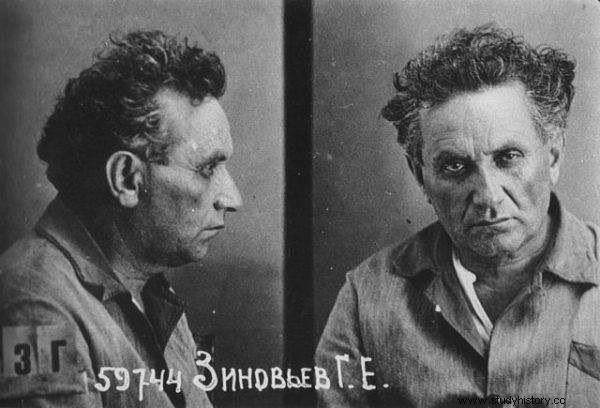
Zinoviev during the trial (source:public domain).
When Stalin became the absolute ruler, he could not tolerate the old Bolshevik, thanks to whom he gained power. Zinoviev knew too much - he was one of the first victims of the great purge . He was sentenced in the first Moscow trial and executed in 1936.
Lew Kamenev
Like Georgy Zinoviev, he was one of Lenin's closest associates. And just as Zinoviev did not listen to Ilyich when he, at the end of his life, warned the party against Stalin . He supported Józef Wissarionowicz in his quest for supreme power and, exactly like Zinoviev, quickly gave up his posts.
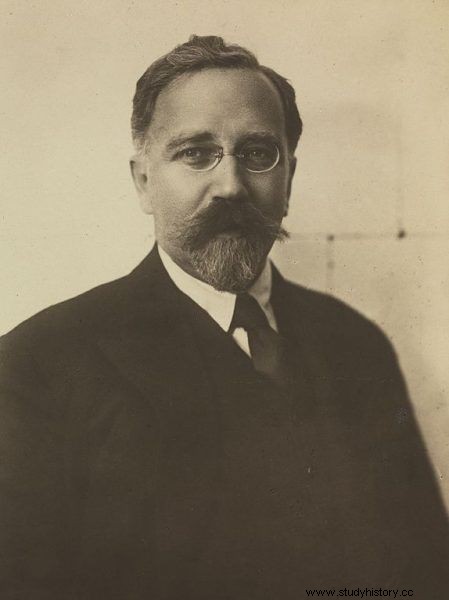
Lew Kamenev in the 1920s (source:public domain).
In 1935, Yezhov under the personal direction of Stalin arrested Kamenev's family members and supporters on conspiracy charges. It was an introduction to a general crackdown with Stalin's old comrades. The following year, Kamenev was indicted in the first Moscow trial and shot.
Anastas Mikojan
An example of the fact that not every close associate of Stalin was sentenced to death. A member of the Central Committee from 1923, he supported Stalin in the struggles for power. From then on, tried to never stand in opposition towards the chief. He did it well, held ministerial positions and most importantly - he was a member of the informal clique that ran the state along with Stalin.
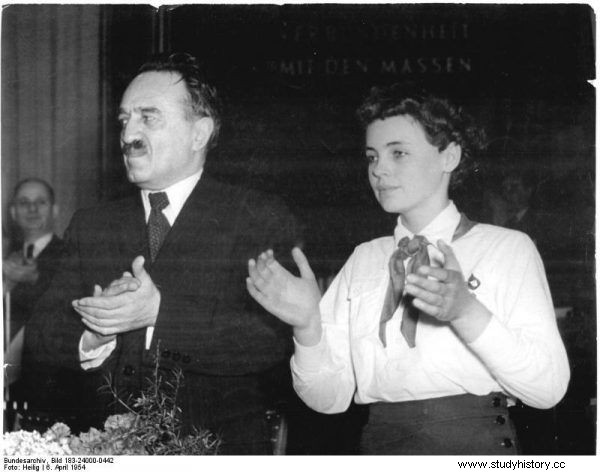
Anastas Mikojan in Berlin in 1954, accompanied by a German communist (photo:Heilig, public domain after Bundesarchiv).
Nevertheless, several times he was close to death - Stalin criticized him several times and removed him from real power and appanage. As Oleg Khlevniuk proves, there are many indications that Mikoyan's life was saved by ... the death of Stalin who was just planning to "swap" the suit of his closest associates.
This article has more than one page. Please select another one below to continue reading.Attention! You are not on the first page of the article. If you want to read from the beginning click here.
Nikolai Bukharin
Editor-in-chief of Pravda, in which he worked closely with Stalin. In the early 1920s, he tried to oppose the rising power of Koba but already in the deal with Trotsky, he took the "right" side. For years he was the chief ideologist of the Bolsheviks and one of the three most important people in the state, until he fell out of favor in 1928 and then lost his post in the Politburo.
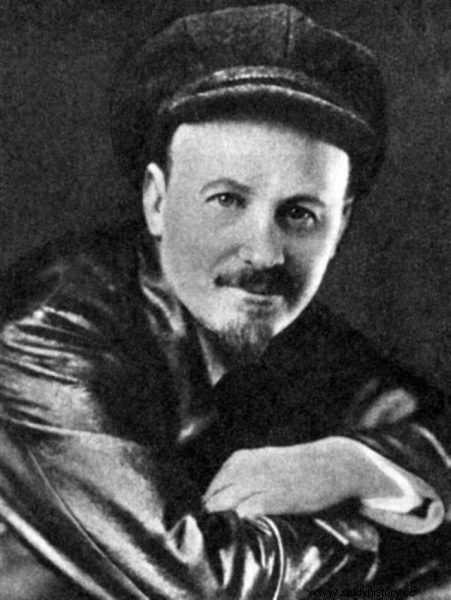
Nikolai Bukharin (source:public domain).
Nikolai Bukharin, who had previously vigorously condemned Trotsky, was convicted in the trial of the right-wing Trotskyist anti-Soviet bloc and executed in 1938. His first wife and her entire family died immediately after him. The second wife was tortured and sent to a labor camp for 18 years.
Sergo Ordzhonikidze
The Georgian Ordzhonikidze was a friend of Stalin from the times of his revolutionary youth - they met no later than 1907. He was also the last man to refer to Stalin by his first pseudonym - Koba. At the beginning of the 1920s they still had an old friendship - Stalin helped Ordzhonikidze avoid the consequences of his tough policy in Georgia.
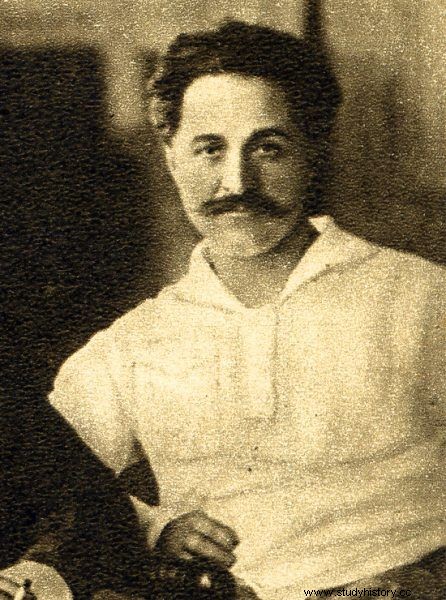
Sergo Ordzhonikidze in 1925 (source:public domain).
Ordzhonikidze was admitted to the Politburo in 1930, and from 1932 - he was a heavy industry commissioner (minister). He was still relatively independent and genuinely honest with Koby . When the great terror grew, he delayed Stalin's actions against Bukharin, and then defended his subordinates from the ministry. However, he could not stand the terror and committed suicide in 1937.
Shortly before his death, he confided: Stalin did the wrong thing. I have always been his close friend. I trusted him and he trusted me. And now I can't work with him anymore, I will commit suicide .
Gienrich Jagoda
As a young Chekist he "worked" during the Tsaristine Civil War. It was then that he met Stalin - with him he implemented the tactic of revolutionary terror for the first time. Then, as a protégé of Koby, he made a career in the security service. Being its deputy head, he became the main creator of the GULag and the builder of the Białomorski Channel - and at the same time the executioner of 300,000 people who died and died during its construction. From 1934, head of the OGPU and then the NKVD.
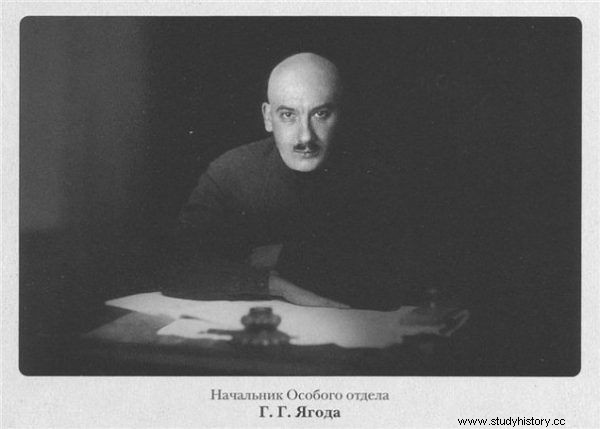
Gienrich Jagoda in the photo from 1930 (source:public domain).
However, he turned out to be not zealous enough in introducing the Great Purge and was quickly replaced by the ambitious Jeżów. It was he (with Stalin's consent, of course) who charged his recent boss, Yagoda, with torture and death in the third Moscow trial.
Mikhail Tukhachevsky
The most famous general of the revolution, the civil war and the Polish-Bolshevik war. Khrushchev propaganda called him Bolshevik Napoleon. This outstanding tsarist and Bolshevik officer was the creator of the successes of the revolutionary army - it was he who led it as far as the Vistula and led to the slaughter of the insurgents in Kronstadt. He turned out to be a great visionary of the development of the art of war.
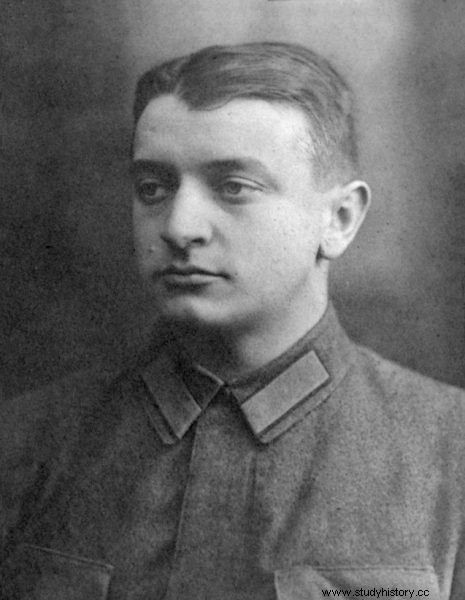
Mikhail Tukhachevsky (source:public domain)
Such a person was certainly too unusual to survive in the state of Stalin's sole ruler. It was alleged that German intelligence had planted "evidence" for a conspiracy involving Tukhachevsky. Nothing could be more wrong:The historian Oleg Khlevniuk cites documents clearly showing that Stalin personally supervised their prosecution.
